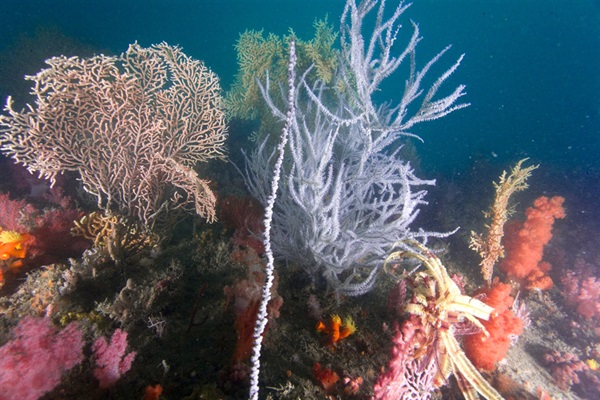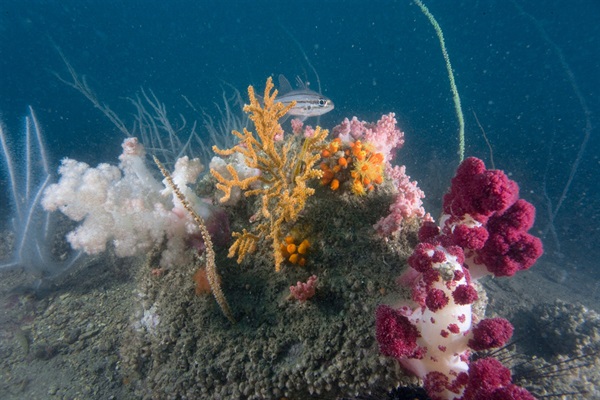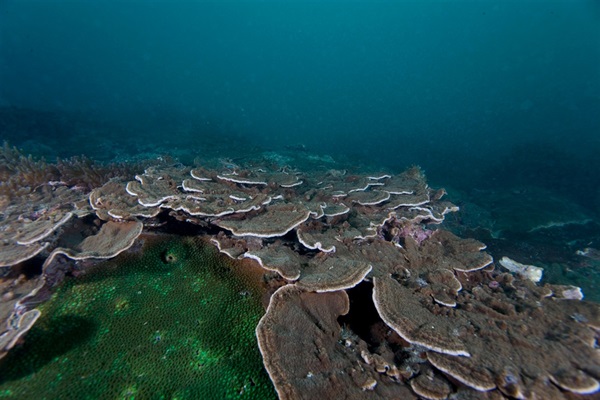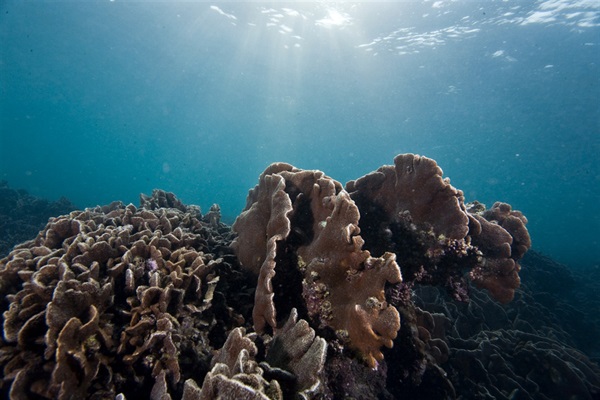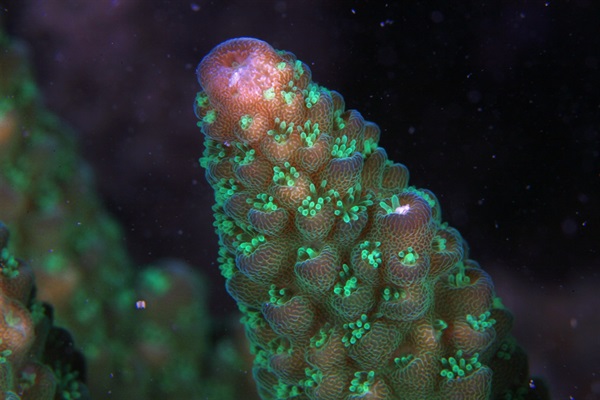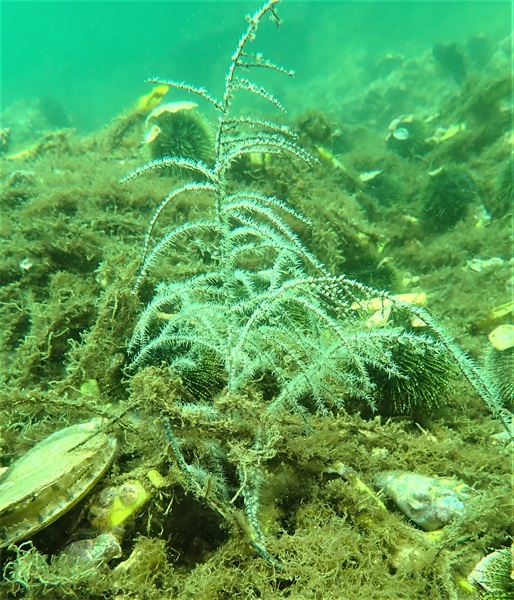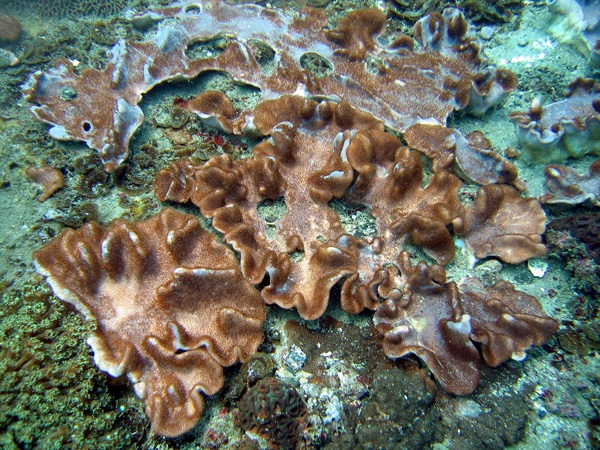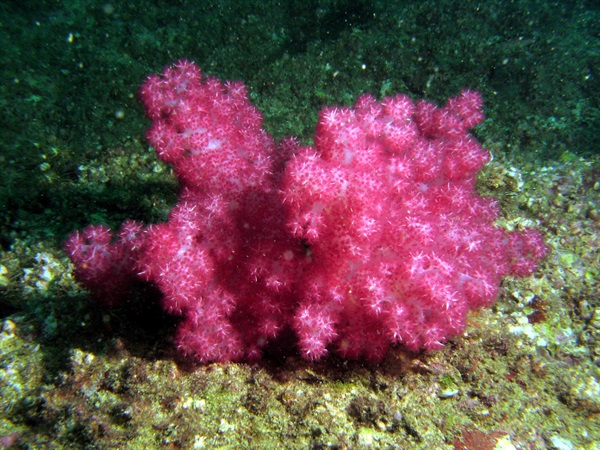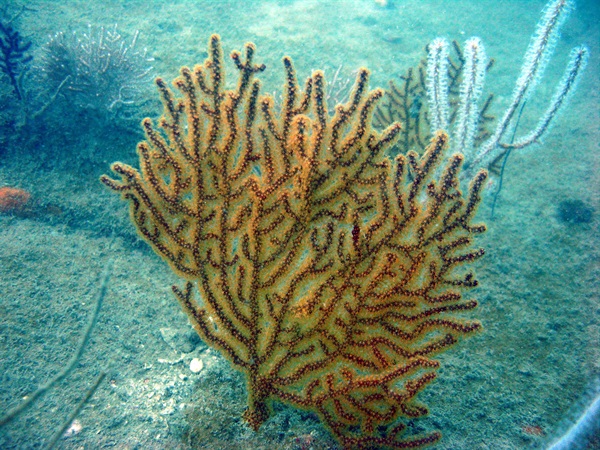Corals are sessile animals belonging to Phylum Cnidaria, a group that also includes an enormous range of jellyfish, hydroids, soft corals, anemones and many others. The word 'coral' has been used to describe different organisms in this group, including the hard coral, black coral, soft coral and gorgonian. Ecologically, corals can be divided into two groups. Corals that contain symbiotic algae, zooxanthellae, are referred to as hermatypic or reef-building corals, while those that do not contain it, are called ahermatypic or non-reef-building corals.
Corals in Hong Kong usually directly attach onto boulders and bedrock to form scattered fringing coral communities along the coast. They mainly grow in the sub-tidal zone but rarely at the intertidal zone because of the low temperature in winter. Scattered coral communities can be found in shallow waters of the rocky shores around Hong Kong's coastline, as well as outlying islands. Among all the coral communities, the one in Tung Ping Chau Marine Park is of the sites with the highest richness. Other sites of high coral richness are mainly located in the eastern and northeastern waters, including Hoi Ha Wan Marine Park, Bluff Island, Sharp Island and Crescent Island.
The myriad shapes of corals and the diversity of coral-associated organisms in Hong Kong are of high value. They are also important marine resources, in terms of biological diversity and with respect to the well-being of our society.
Hard Coral
Most hard corals are capable of building fascinating reef structures. Hard corals grow progressively by depositing more and more calcareous materials underneath their living tissues. So a living hard coral colony is made up of layers of dead skeleton materials (mainly calcium carbonate) with a thin layer of soft tissue on top. It is these hard corals that build up the foundation of the coral reef with the calcium carbonate deposit over thousands and thousands of years.
In Hong Kong, there are 84 species of reef-building corals from 30 genera. These corals can tolerate wide annual fluctuations in water temperature and salinity as well as periodic typhoons and monsoon. The dominant species are mainly encrusting or massive merulinids and acroporids. Among the hard corals, branching Acropora coral grows the fastest, up to 20 cm a year. They are mainly found in the eastern and northeastern waters, often associated with well-established coral communities in shallow water. In contrast to Acropora spp., the growth rate of massive corals is slow, usually less than 1 cm a year. A massive Porites colony of one meter high could be over 100 years old. In the tropics, they can reach 8 m in height and hence can live as long as a thousand years. Platygyra corals are Hong Kong's flagship species. Certain Platygyra species such as P. carnosa are in high abundance and reach large sizes of > 1 m in height in certain localities of Hong Kong, forming the major structural framework of these coral communities. This feature is not observed anywhere else in the Indo-Pacific.
Black Coral
Black corals assume a variety of branched or whip-like growth forms. Their axial skeleton is black while the polyps are white, yellow, orange or brown. On the surface of the skeleton, there are small hooks or thorns for the polyp to grip. Unlike hard corals, the polyps of black corals are not retractable. Six species of black corals from two genera have been recorded in Hong Kong waters. Most of them are found in north-eastern waters at depths of 10–20 m.
Soft Coral
Soft corals are characterised by the absence of an external calcareous skeleton (exoskeleton). Their skeletons are in the shape of needle-like structures called sclerites found inside their body. They are filter feeders and inhabit areas with currents. Some shallow water species may have symbiotic algae. In Hong Kong, 29 species of soft coral from 14 genera have been recorded.
Gorgonian
Similar to soft corals, sclerites are found inside the body of a gorgonian . In addition, they also have an axial skeleton mainly made up of proteinaceous materials that form the core of their branching colonies. There are 38 species of gorgonians from 19 genera in Hong Kong waters. Gorgonians prevail in the eastern waters of less variable salinity. They require a firm substratum for anchorage and reach maximum abundance at about 15–25 m deep.
